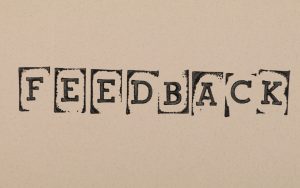Organizational effectiveness may seem like complex business jargon, but it truly has an impact on your brand’s success.
The term simply measures how well your organization achieves its goals. Ideally, the business would function as effectively as possible.
Building such a venture involves many steps and long-term commitment, but the benefits are substantial when you minimize wasted time and resources. One powerful tool for achieving this is the HIGH5 strengths assessment. By identifying and leveraging individual and collective strengths, organizations can significantly enhance their effectiveness. The HIGH5 test provides valuable insights into your team’s unique talents, allowing you to align roles and responsibilities with natural abilities, thereby reducing inefficiencies and boosting overall performance.
Continue reading to understand why organizational effectiveness is more than just a vapid buzzword, and which steps to take to make your brand hyper-effective.
What is Organizational Effectiveness? – Definition
Effectiveness simply refers to one’s ability to achieve the desired result. In an individual sense, effectiveness is simpler to point out.
Many goal-oriented individuals can be described as effective. Jeff Bezos, for instance, had the eventual goal of selling everything via the web.
Years later, you can buy almost anything on Amazon, meaning he was an effective entrepreneur. Once you start inspecting larger groups, determining effectiveness is more difficult.
If a company is successful, they are not automatically also effective.

Organizational effectiveness depends on a variety of factors, such as mission, company values, internal effectiveness, resources, market positioning, employer/employee relations, and so on.
There is no single definition for effectiveness in organizations.
Accomplishing their goals is only one element of effectiveness; stakeholder satisfaction, long-term profitability, or societal impact are all other ways companies can be effective.
In general, organizational effectiveness can be defined as how successful groups are at achieving their goals.
The specific goals are irrelevant, and they can range from improving productivity while boosting customer relations or improving internal efficiency, to ensuring every child in the local community has clean drinking water (external goal).
Importance of Organizational Effectiveness and Why Does It Matter?
Effectiveness is a key metric that is strongly correlated with a company’s long-term success. Effective behaviors do not remain if brands only have periodic moments where they pay attention to efficiency.
Instead, such behaviors must become standard in the workplace and employees should be encouraged to be efficient throughout their time at the company.
There is a stark difference between employee and company outcomes when comparing these two approaches.
Short initiatives to force change onto employees simply do not work in the long term.

Instead, a strengths-based approach, such as that offered by the HIGH5 assessment, can be transformative. By helping employees build their strengths, organizations can foster greater output, increased productivity, and a more goal-oriented mindset. The HIGH5 test provides a framework for understanding individual and team strengths, leading to increased positivity and collaboration. This approach aligns perfectly with organizational effectiveness principles, as it empowers employees to contribute their best work naturally and enthusiastically.
Effectiveness does not negatively impact or stress employees or hinder consumer retention. In fact, it is quite the opposite.
According to a study by Bain & Company, companies that prioritize efficiency are four times more likely to say their approach enabled growth instead of hindering it.
Additionally, such brands are also four and a half times more likely to state customer experience improved.
Pro Tip From HIGH5
Leverage the HIGH5 strengths assessment to create a strengths map of your organization. Use this map to assign tasks and projects based on team members’ natural talents, thereby increasing overall effectiveness and employee satisfaction.
The Six Steps of Organizational Effectiveness
Each group develops effectiveness in different ways. However, there are a few steps you can take to get you started on the right foot.
The following approach builds and unites the organization, empowers leadership and transforms your business into the most profitable and productive version of itself.
Leadership
Leaders must have a clear vision of what they wish to achieve and determine which processes are holding them back. The HIGH5 strengths assessment can be an invaluable tool in this process, helping leaders identify their own strengths and those of their team. By understanding these strengths, leaders can more effectively implement and model desired behaviors. The HIGH5 approach emphasizes that true effectiveness comes from consistently leveraging natural talents, not just sporadically, but each and every day. This strengths-based leadership style can significantly enhance organizational effectiveness by aligning individual capabilities with organizational goals.
Ask yourself how your current business structures contribute to or hinder your success.
Are they optimized for efficiency? Consider exactly how you will stand out from your competition, which unique element of your business draws in and retains clients, and how you can keep employees working long-term while being satisfied.

Communication
Businesses often have weak communication systems implemented, resulting in employees being left behind and a fractured work chain.
However, proper communication ensures your message is understood by consumers and values/expectations are clear to employees.
Leaders should be involved in message spreading.
Examples of this include uniting employees under a common goal, reducing misunderstanding, staying truthful to create an honest and open company culture, (almost) never allowing excuses, prioritizing learning from experience, and view mistakes not as flaws, but learning opportunities.
Accountability
As a leader, visualize how each employee can contribute to making your vision a reality, think of goals to measure success and begin taking action yourself.
Hold employees accountable by monitoring their productivity. If they go above and beyond your expectations, reward them.
Create consequences for those who choose to slack off. These positive/negative consequences set an example to other employees and build discipline.

Delivery
Do not overcomplicate your delivery process. Instead, ensure internal processes are efficient. Without complexity, consumers are more likely to engage with you and become loyal to your brand.
Managing operations should be done as effectively as possible. Some techniques you can utilize include continuously reevaluating operational efficiency, creating a strategic plan for growth, or fostering performance increases in certain departments.
Performance
Hire with the intention of developing the trainee’s skills and knowledge over time, so they align to fill the skills gap in your company.
Once new employees feel more comfortable and begin participating more in desired behaviors, reward them to retain them as a loyal employee and so they feel more recognized as an employee.
Measurement
Ensure you have a system to evaluate and track progress. Crucial metrics should be tracked so you stay on track.
These include productivity, product quality, and consistency of desired behavior.
Each of these attributes should be tracked daily and valued by employees. Instill discipline into employees by ensuring these metrics are where you expect them to be.
Track this progress to see if you are on track to achieve your goal, and if not, find why and create a consequence for the employees who hold back the business.
Also, review product development through clearly measured metrics, consistently review strategies, and ensure employee actions are motivated by a desire to achieve your brand’s mission.
Pro Tip From HIGH5
Use the insights from your HIGH5 strengths assessment to develop a leadership style that authentically reflects your top strengths. This will not only make you a more effective leader but also inspire your team to embrace their own strengths in their daily work.
Best Approaches and Models for Organizational Effectiveness
Systems Resources Approach
The systems resources approach prioritizes evaluating input, which is simply how effectively an organization acquires the resources it needs to succeed.
A business utilizing this approach pays less attention to employee productivity but puts a greater emphasis on a single process: acquiring resources.
These can be needed for growth or simply necessary for product development. A resource-focused mindset can help employees produce faster and create a supply chain more effectively.
Additionally, if unique resources are found, a competitive advantage can be created to help businesses stand out.
Goal Approach
While the prior approach focuses on input, the goal approach does the opposite by focusing on output.
Output is how well a group can achieve its goals through work and strategic thinking.
At times, goals can be in conflict with one another. If this occurs, trade-offs might become necessary so the employee’s performance can remain high quality by not focusing on too many tasks/goals at once.
Internal Functioning Approach
The internal functioning approach focuses closely on the internal aspects of an organization.
This technique aims to minimize employee stress, unite individuals, encourage collaborative behavior, and monitor operational efficiency. The HIGH5 strengths assessment perfectly complements this approach by providing deep insights into individual and team strengths. By leveraging these strengths, organizations can create a more harmonious work environment where employees feel valued and understood. This not only reduces stress but also naturally fosters collaboration as team members appreciate each other’s unique contributions. The HIGH5 test can be a cornerstone in implementing this approach, leading to improved internal functioning and, consequently, greater organizational effectiveness.
Companies often focus on retaining employees by increasing their morale and satisfaction, rewarding them, offering an open environment with easy access to resources, and minimizing conflicts in the workplace.
Strategic Constituencies Approach
This approach differs from the others previously mentioned, as it focuses not directly on the business, but rather on those who have a stake in it.
For instance, this would include suppliers, customers, participants, partners, lenders, and so on. If they are influenced by the company, then this strategy focuses on that group.
Each approach defines effectiveness slightly differently, and those using strategic constituencies view an effective organization as one that fulfills the needs of the groups which depend on it. Trade-offs will be crucial to this approach.
Measurement of Organizational Effectiveness
To enhance organizational effectiveness, it’s crucial to have a clear understanding of your objectives and how to measure progress towards them. The HIGH5 strengths assessment can play a pivotal role in this process. By identifying individual and team strengths, you can create a more nuanced and effective scorecard that aligns with your organization’s unique talent profile. This strengths-based approach to measurement allows you to consistently reevaluate which strategies are most effective, based not just on outcomes, but on how well they leverage your team’s natural talents. The HIGH5 test provides the insights needed to make these evaluations more accurate and improvements more seamless, directly contributing to increased organizational effectiveness.
Below are some science-based questions you can ask yourself when trying to evaluate your organizational effectiveness (OE). Firstly, consider your activity domain.
What activity domain will effectiveness assess? This can include goal implementation, consumer or stakeholder satisfaction, return on investment, revenue, other financial figures, consumer or employee retention, market competitiveness/competitive advantage, and so on.
Perspective should also be considered when thinking about OE. Whose perspective will judge effectiveness? You can consider how effective an organization is from a variety of viewpoints, and each group will have a different set of requirements for your company to be effective.

Examples could include leader perspective, employee perspective, community perspective, customer perspective, or shareholder perspective.
How deep do you want to analyze? Ask yourself if you wish to see certain individuals, groups, or departments become successful before focusing on effectiveness in the entire organization.
You could even make an analysis on a grander scale, such as industry-wide or global effectiveness.
Consider how long you would analyze for (what is the analysis time frame?) This can range from considering past inefficiencies to understanding your current OE, or focusing on the long-term development of effective habits.
Do you have a reference for your effectiveness assessment? Having one can give you a baseline to compare yourself to and track growth.
Compare your business to your ideal organization, past versions of your group, goals you have created, or other competitors.
Such questions turn an intangible idea like effectiveness and make it measurable and trackable within your organization.
There are many other ways of measuring effectiveness, but these few questions should assist you in formulating goals for your company’s effectiveness.
Also consider how well your brand achieves your goals, how competitive you are in your industry, and whether you have an advantage over the competition.
Creating benchmarks for these KPIs can help improve an organization’s effectiveness.
Pro Tip From HIGH5
Integrate strengths-based metrics derived from your team’s HIGH5 assessment results into your organizational effectiveness scorecard. This will help you track not just what is being achieved, but how well your organization is leveraging its unique strengths to achieve its goals.
Organizational Effectiveness FAQ
What is an example of organizational effectiveness?
Organizational effectiveness is a group’s ability to meet their goals. It is how effective the organization is at following through with their plans and staying motivated.
For instance, an organization could be effective by assigning tasks to employees based on strengths. This would boost engagement, satisfaction, and productivity, which all contribute to organizational effectiveness.
What are the 4 perspectives of organizational effectiveness?
In 2008, Balduck and Buelens proposed that there are 4 main perspectives surrounding organizational effectiveness. These four perspectives are the system resource approach, goal approach, constituency approach, and internal process approach.
What are the six systems of organizational effectiveness?
There are six main contributing factors to organizational effectiveness. Firstly, the team must have a skilled leader. They should be inspiring and effective in delegating tasks.
Additionally, consistent communication is necessary to prevent major miscalculations. Accountability is needed as well.
The fourth system is delivery, putting in systems that maximize the team’s productivity. Performance is the fifth, and it centers around hiring the best talent and training them well. Finally, metrics are needed to track progress and evaluate performance.
Overall Conclusion Of Organizational Effectiveness
All leaders must understand that organizational effectiveness is becoming more and more important as industries become more competitive.
Whether you lead a small startup looking for a competitive advantage in a cutthroat industry, or a director of a charity searching to fulfill your organization’s mission, focusing on efficiency and effectiveness will help you achieve your goals and desires.
It will ensure employees stay productive and satisfied, improve customer relationships, make consumers more loyal, and increase the speed at which the brand grows.
No matter which perspective you evaluate from creating a more effective business positively impacts everyone involved, from leader to employee, to even the entire community.
Related articles:








